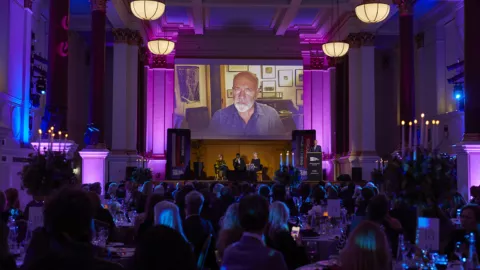
Jonathan Blitzer Longlist Interview
9 October 2024
Charles Foster reveals he tried to awaken senses he doesn’t usually use when writing Being a Beast and discusses the challenges of entering the world of a swift and an urban fox.
This is the first in our series of longlisted author interviews.
What does it feel like to be longlisted?
Hugely exciting, intimidating and humbling. I’m in awesome company.
How did you research for your book?
I read everything I could find about the way that my five species’ sensory receptors worked, and how the information they receive is processed. Then I tried to awaken – or pay attention to – the senses I don’t usually use. This involved some silly parlour games, like lighting different types of incense in various rooms in the house, blindfolding myself, and then trying to navigate around by reference to the scent. And then I went out into the woods and the rivers and the moors and the air and tried to live, as far as a human can, like each of my animals.
Which non-fiction authors do you admire?
What a huge question! There are so many. But of authors currently working, I’d mention David Abram, Jay Griffiths, Iain McGilchrist, Barry Lopez, Robert Macfarlane, and Philip Hoare.
What are you working on next?
Something about the sea. Herman Melville says something along the lines of: ‘Unless you’re thinking and writing about the sea you’re failing, in a contemptibly cowardly way, to confront the real issues of life.’ When I read that I heard the slap of a gauntlet being thrown down. The book is at an early embryonic stage, but is slowly beginning to acquire recognisable limbs and organs. It’s not yet clear what sort of character it will have.
Whilst researching for Being a Beast, you lived life as a badger, an otter, an urban fox and a swift. Which did you find most challenging?
My attempt to enter the world of a swift was the most ludicrous and hubristic. They’re the most aerial of all creatures. The swifts that hatch under my eaves in Oxford may go from Oxford to central Africa and back four times without touching anything more solid than the carapace of an airborne beetle. They won’t perch anywhere. They sleep on the wing, spiralling up on the themals at night. They only land when they breed. How could a lumpen, earthbound human get anywhere near them? Only very weirdly, as it turned out.
The urban fox was equally challenging. But the challenge was very different. Foxes are supreme sensory all-rounders: they have wonderful eyes, ears and noses, absurdly sensitive feet, and a magnetic sense that tethers their bowels to the Poles. Trying to hear how each of these senses talked to the others, and so to reconstruct the East End of London inside a fox head was, well, hard.

10 April 2025

17 December 2024

19 November 2024